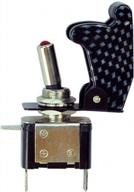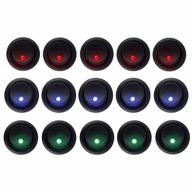
Review on Ultimate Control: 16 Channel DMX Controller Relay Switch Dimmer Kit for DJ Equipment by Micael Casillas

I used these relays for a simple Christmas light show. You can do that too.
You can use these relays to create your own simple but effective Christmas light show. This relay board / DMX interface works great. BUT they can only turn the light on and off to the beat of the music. It took me days of internet research and experimentation to get them to work on widely available hardware and software. Here's some help: I used: This 16-channel DMX controller - Raspberry Pi 3 (rPi3) computer for $68 - 32GB SD card for Raspberry PI for $45 - Falcon PiCap for $7 - RS-485 -Ethernet cable for $35 - $5 each PSU - $30 connection cable - $10 Falcon Pi Player (FPP) software - free https://github.com/FalconChristmas/fpp Vixen Christmas Light software - free http://www. vixenlights.com/downloads/ is also free software which I recommend. xLights is geared towards more complex controllers with pixel, brightness and color attributes rather than on/off relays. For me, Vixen was much easier to set up. Setting up a Falcon PI PiCap (PiCap) The Falcon PiCap sits on top of a Raspberry Pi 3 (rPi3). Align the pins on the rPi3 with the socket on the PiCap. The orientation of the board should position the PiCap so that it covers the top of the rPi3. Spacers and screws are usually supplied to attach the PiCap to the rPi3. Use the information in the unofficial PiCap manual to set up an additional 12V power supply for the rPi3 (PiCap can be configured to power the rPi3 at the same time) and the DMX option for the output. This is the link: https://github.com/nick-diel/Falcon-PiCap-ManualSetup The Falcon PI Player (FPP) On the DMX control board set the start address. Each of the switches 1-9 corresponds to a binary number. If you don't know how to generate a binary number, an online search may help. The first board should start with DMX 1. To do this, use the DIP switches on the control board. First turn off all switches. Then turn on switch 1, which sets the starting address. This results in 16 relays. If you were to add a second board, the starting address would be 17. Turn on switches 1 and 5. Binary 1 = 1 and 5 = 16 for a total of 17. Theoretically you can add addresses up to 512 relays. Connect power to all devices. Then connect one end of the Ethernet cable to the connector on the PiCap and the other end of the cable to the INPUT connector on the control board. Check the jumpers on the PiCap board to ensure it is set to output DMX streams. Download the FPP software to the SD card. An internet search will help. I used SD card formatter app and balenaEtcher app. After the FPP image has been successfully written to the SD card, insert the card into the bottom slot of the rPi3. Then connect your internet (wired or wireless), keyboard, mouse and monitor to the rPi3. Boot rPi3 from the SD card. When setup is complete (the last line has the cursor blinking), make a note of the IP address assigned by your router. Move the keyboard, mouse and monitor back to the PC. KEEP rPi3 connected to your network. Then login to rPi3 via your PC browser with the IP address assigned by your network. You should see the FPP status screen. Click the I/O Setup tab. Then click Channel Outputs. Then click on the "Other" tab. Then click Add. Select DMX-Open from the drop-down list. Enter "Start Channel" "1" and "Channel Counter" "512". Then, in the Port section, select ttyAMA0 from the drop-down list. Click Restart FPPD. Click Status/Management. Click Test Ad. Box Click the box next to the Enable Trial Mode box at the top of the page. You should see the relay indicators flashing. Try different test patterns to make sure all lights are working. Install the Vixen Christmas Light software. You're almost done. Create a new folder. I propose in a folder with documents. Start Vixen. You will see a profile selection window. Click Profile Editor. Click the folder icon next to the data folder. Locate the newly created folder in the Documents subdirectory. Click on a folder. Optionally, you can give Vixen a profile name for the directory. click OK. Back on the selection screen, tap on your new profile. Click Download. You should be on the main Vixen screen. Click Display Settings. In the controller section, open the drop-down menu. Click DMX to open. Save the name and enter the number of exits. You can select and number up to 512. The controller is now defined and will now correctly match your board. You can navigate to items, previews, and sequences. The rest is up to you. Read the Vixen manual, choose a song and follow the rest of the settings!
- Automotive
- Unreliable
New products
Comments (0)
Top products in 🔋 Switches & Relays

5-Pack 12V/20A Red LED Illuminated 3Pin HOTSYSTEM Rocker Toggle Switch SPST ON/Off Carbon Fiber Cover For Car Truck Boat Motorcycle

45 Review

HOTSYSTEM 5 Blue + 5 Red + 5 Green Dot LED Light Round Rocker Toggle Switch SPST On-Off Control For Car Truck

24 Review

Xiaomi Mi Robot Vacuum-Mop 2 EU, white

82 Review

Yokohama Geolandar A/T G015 215/65 R16 98H all season

83 Review





